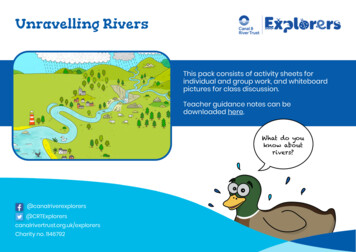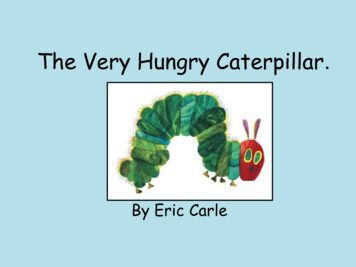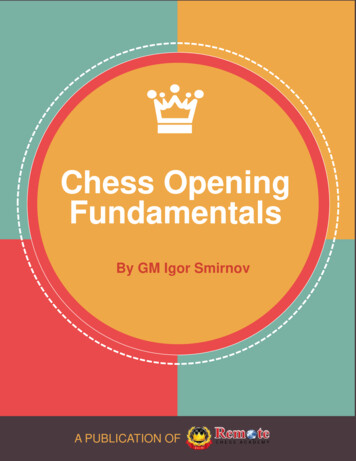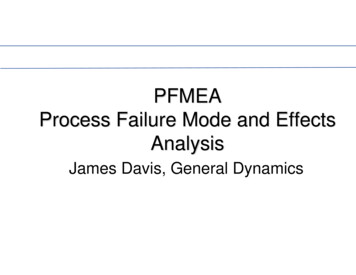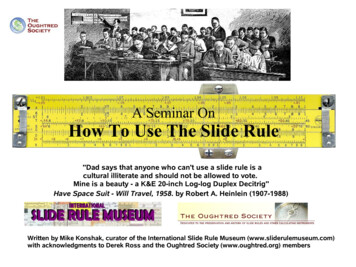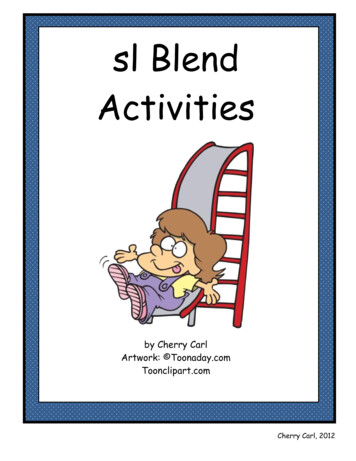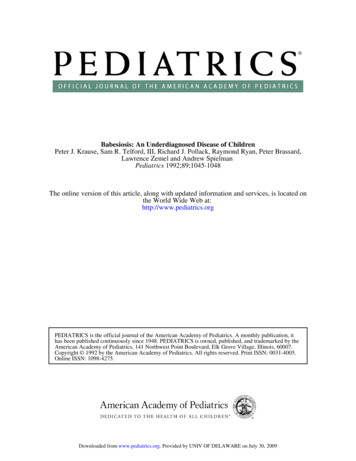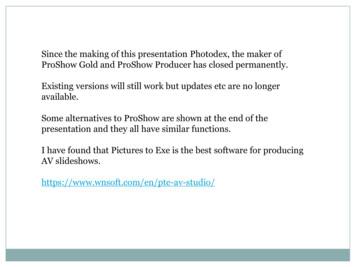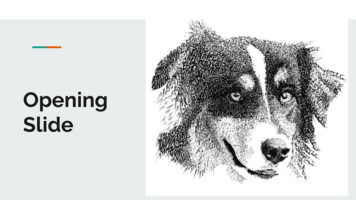
Transcription
OpeningSlide
Pen and ink
Choosing an image to work with Choose an endangered animal that hastexture, or value.The animal will be easier to draw if youcan clearly see light areas and darkareas.Choose a photo with a strongcompositionChoose a clear image with easy to seedetails ( ex. Not pixelated or blurry)
Pen and Ink drawingsPen and ink is an art form where you draw using a variety ofpens instead of pencil.It is a very exciting medium to work in, but also a challenging oneas you cannot use pressure to create tonal values like you canwith a pencil. You need to use a variety of marks on the paper inorder to get your tonal values and details.
MaterialsNib pens: Nib pens are often used in calligraphy, you may dip your metal nib intoink, or in fountain pens there is an internal resevior of inkFelt tip pens/ Fine liners: Fine liners can have a variety of size tips to achieve smallsharp details.Ballpoint pens: A solid, classic penBrush pens: Brush pens have a flexible tip with a brush like quality.India ink: India ink is a pigment suspended in water. You can add water to lightenthe value of the ink. ( India ink is similar to a black watercolor)
Micron penthicknessThe HIGHER thenumber the THICKERthe line!
Pen drawing techniquesHatching: an ink drawing technique where you apply tone and texture inrows of parallel lines.Crosshatching: where you criss-cross several layers of hatching in order todarken your tonesStippling: is an ink drawing technique where you apply tone and texture insmall dots. You can adjust the depth of tone and the roughness of texture byvarying the density and distribution of the dots.
Pen drawing techniquesScumbling: tiny, squiggly circular lines - sort of like "controlled scribbling"Value Scale: Showing a range of light to dark valuesContour Hatching: follows the contour, or curve or outline, of the object. Inthis case, the hatching is rounded to match the shape of the circle.
What are some penand ink techniquesshown here?
What are some penand ink techniquesshown here?VINCENT VAN GOGH (1853-1890)'Harvest Landscape', 1888 (ink on paper)
StipplingPay attention tothe range ofvalues created.There are lightlights, darks, andmid tones.
JacobEverett Scumbling
Scumblingwith arepeated wordYou can manipulate value bycondensing your marks in dark areasand using more spread out marks withthinner pens in lighter areas.
Hatching
Crosshatching
Crosshatching
Ink wash
Ink wash
Your project:You will be creating a portrait of an endangered animal using pen and ink techniques. The background ofyour piece will have a watercolor wash and a pattern you create, repeated in the background. The patternmust relate to the animal. For example, if you draw a leopard, you can use paw prints in the background. Ifyou do a koala, your pattern could be leaves that the koala eats. You may consider a color watercolor wasthat relates to your animal. For example, if you draw marine life, a blue wash may be effective. Your washshould be light and not distract from your drawing.Requirements: You must use at least TWO pen and/or ink techniquesYou must research and draw an endangered animalYou must design a pattern for the background of your drawingYou must add a watercolor wash in the background
How to grid your photo:
Works orksheet/https://www.artyfactory.com/pen and ink drawing/pen-and-ink-drawing-techniques.html
Pen drawing techniques Hatching: an ink drawing technique where you apply tone and texture in rows of parallel lines. Crosshatching: where you criss-cross several layers of hatching in order to darken your tones Stippling:
